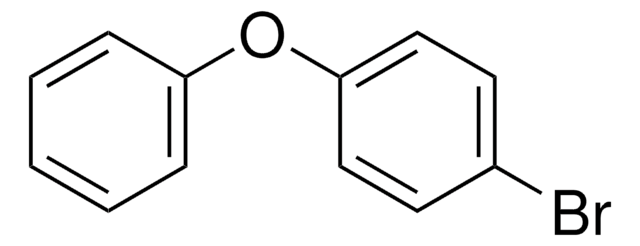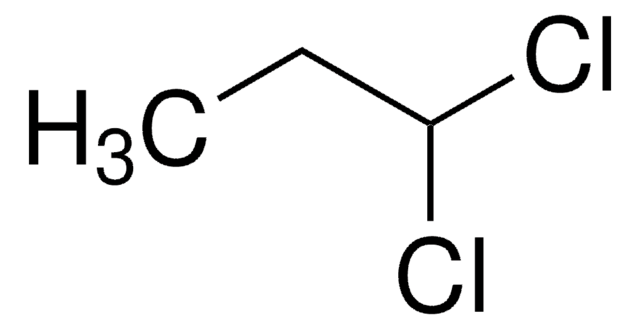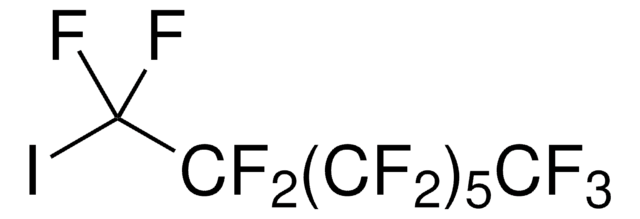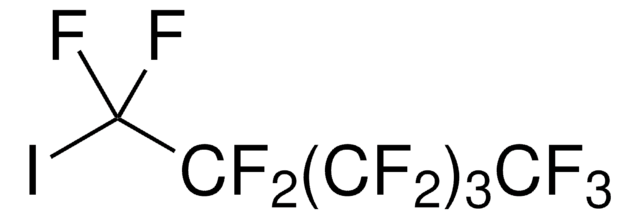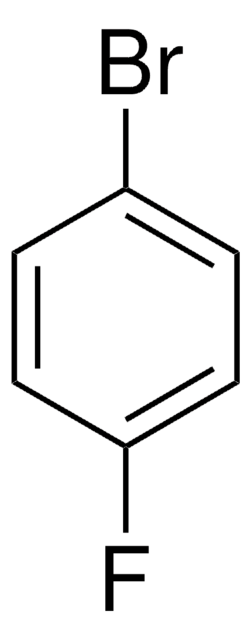357650
4-Chlorodiphenyl ether
99%
Sinónimos:
4-Chlorophenyl phenyl ether
Iniciar sesiónpara Ver la Fijación de precios por contrato y de la organización
About This Item
Fórmula lineal:
ClC6H4OC6H5
Número de CAS:
Peso molecular:
204.65
Número CE:
Número MDL:
Código UNSPSC:
12352100
ID de la sustancia en PubChem:
NACRES:
NA.22
Productos recomendados
Ensayo
99%
Formulario
liquid
índice de refracción
n20/D 1.587 (lit.)
bp
161-162 °C/19 mmHg (lit.)
densidad
1.193 g/mL at 25 °C (lit.)
grupo funcional
chloro
phenoxy
cadena SMILES
Clc1ccc(Oc2ccccc2)cc1
InChI
1S/C12H9ClO/c13-10-6-8-12(9-7-10)14-11-4-2-1-3-5-11/h1-9H
Clave InChI
PGPNJCAMHOJTEF-UHFFFAOYSA-N
Descripción general
4-Chlorodiphenyl ether is halogenated diphenyl ether. It is an estrogenic contaminant and its effect on the growth of endometrial implants has been investigated. Dehalogenations of 4-chlorodiphenyl ether at 375°C over CaO/Ca(OH)2 has been reported.
Aplicación
4-Chlorodiphenyl ether can be used in the preparation of 4′-chloro-2,2′,3,3′,4,5,5′,6,6′-nonabromodiphenyl ether (Cl-BDE-208), an internal standard used in the analysis of highly brominated diphenyl ethers.
Palabra de señalización
Warning
Frases de peligro
Consejos de prudencia
Clasificaciones de peligro
Aquatic Acute 1 - Aquatic Chronic 1 - Eye Irrit. 2
Código de clase de almacenamiento
10 - Combustible liquids
Clase de riesgo para el agua (WGK)
WGK 3
Punto de inflamabilidad (°F)
>235.4 °F - closed cup
Punto de inflamabilidad (°C)
> 113.0 °C - closed cup
Elija entre una de las versiones más recientes:
¿Ya tiene este producto?
Encuentre la documentación para los productos que ha comprado recientemente en la Biblioteca de documentos.
Yang C and Pittman JR CU
Hazardous Waste and Hazardous Materials, 13(4), 445-464 (1996)
Y C Chui et al.
Drug metabolism and disposition: the biological fate of chemicals, 15(1), 44-50 (1987-01-01)
The metabolic disposition of 14C-labeled 4-chlorodiphenyl ether ([14C]4-CDE) was examined in rats following iv administration of a single dose (850 nmol/kg). [14C]4-CDE decayed rapidly from the blood since no unchanged [14C]4-CDE was detected in the blood beyond 2 hr after
W G Foster et al.
Canadian journal of physiology and pharmacology, 75(10-11), 1188-1196 (1998-02-12)
Surgically induced endometriosis in the mouse has been described as a model to investigate the effect of environmental pollutants on the growth of endometriotic implants. The objectives of this study were to evaluate a modified surgical procedure to induce endometriosis
J Z Yang et al.
Reproductive toxicology (Elmsford, N.Y.), 11(1), 69-75 (1997-01-01)
The objectives of this study were to evaluate the effects of repeated injection of 4-chlorodiphenyl ether (4-CDE) on the survival and growth of endometriotic implants. Endometriosis was surgically induced in adult female B6C3F1 mice (n = 25) after ovariectomy. Seven
Anna Christiansson et al.
Chemosphere, 63(4), 562-569 (2005-11-22)
Polybrominated diphenyl ethers (PBDEs) have been used extensively as brominated flame retardants (BFRs) in textiles, upholstery and electronics. They are ubiquitous contaminants in wildlife and humans. A low concentration of nonabrominated diphenyl ethers (nonaBDEs) is present in commercial DecaBDE and
Nuestro equipo de científicos tiene experiencia en todas las áreas de investigación: Ciencias de la vida, Ciencia de los materiales, Síntesis química, Cromatografía, Analítica y muchas otras.
Póngase en contacto con el Servicio técnico